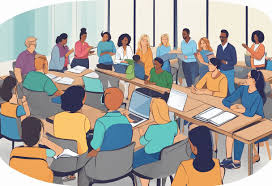The modern classroom demands innovative approaches, and today’s forward-thinking teacher is increasingly recognizing the educational potential hidden within carefully selected kids animated shows. The challenge lies not in deciding whether to incorporate such content but in developing thoughtful curation strategies that maximize educational value while maintaining the engagement factor that makes animation so appealing to young learners.
Effective content curation begins with clear educational objectives and an understanding of how animated programming can support these goals. Teachers who approach selection methodically, previewing content with specific learning outcomes in mind, report higher satisfaction with the educational impact of the animated segments they incorporate into their teaching. This intentionality transforms what might otherwise be passive entertainment into powerful learning tools.
The process of evaluating animated content for classroom use involves multiple considerations beyond simple entertainment value. Age appropriateness, pacing, cognitive load, representation, and alignment with curriculum standards all factor into the decision-making process. Many educators are developing rubrics specifically designed for assessing the educational potential of animated shows, creating systematic approaches to what was once an intuitive process.
Content segmentation represents another valuable strategy employed by effective educators. Rather than showing entire episodes, skilled teachers often select specific scenes or sequences that directly relate to learning objectives. This targeted approach maintains focus on educational goals while capitalizing on the engagement benefits of animated content. It also allows for more immediate discussion and application of concepts.
Cross-curricular connections become readily apparent when teachers analyze animated content through an interdisciplinary lens. A single episode might contain elements relevant to science, social studies, language arts, and social-emotional learning. Identifying these connections allows teachers to reference the same familiar content across different subject areas, reinforcing the interconnected nature of knowledge.
Pre-viewing activities have proven essential for maximizing the educational impact of animated content. Effective teachers prepare students by establishing purpose, activating prior knowledge, and introducing key vocabulary or concepts that will appear in the programming. This preparation creates a more focused viewing experience where students are primed to notice and absorb educational elements.
Active viewing strategies transform what could be passive consumption into engaged learning. Techniques such as guided note-taking, watching for specific elements, or pausing for prediction and discussion convert entertainment into educational experiences. Teachers report that these strategies significantly increase comprehension and retention of educational concepts presented through animation.
Post-viewing activities complete the learning cycle by providing opportunities for reflection, application, and extension. These might include discussion questions, creative responses, problem-solving challenges, or connections to other learning materials. The most effective teachers view animated content not as a standalone educational experience but as one component in a comprehensive learning sequence.
Digital curation tools have emerged to support teachers in this selection process. Online platforms now offer searchable databases of animated content tagged with age recommendations, subject areas, and specific educational concepts. These resources dramatically reduce the time required to find appropriate content while ensuring stronger alignment with educational objectives and standards.
Professional learning communities focused on media literacy and educational animation are developing in many school districts. These collaborative groups share resources, strategies, and assessment techniques, collectively building expertise in this specialized area of educational practice. Such communities represent an important development in formalizing what has traditionally been an individualized approach to content selection.

